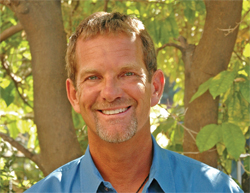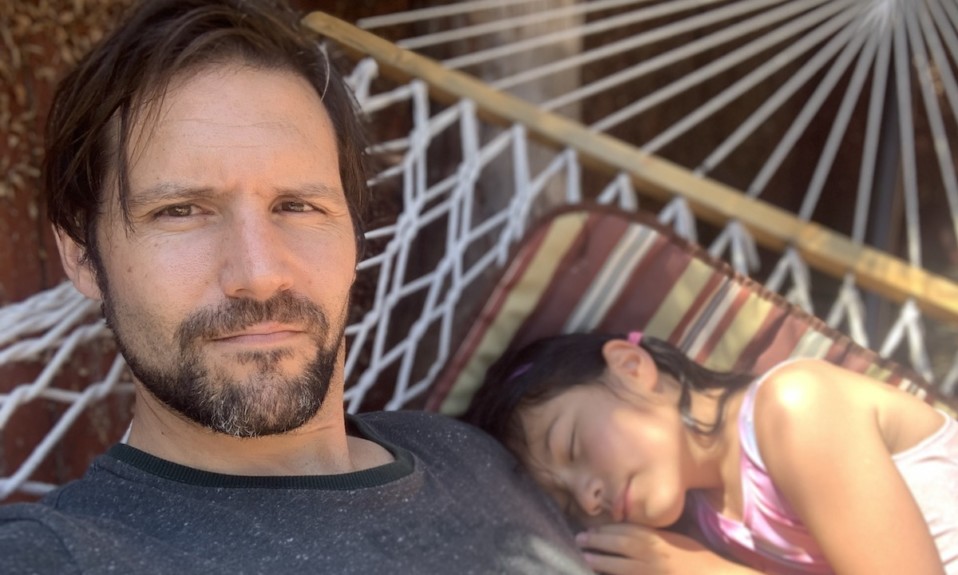| September 2007 |
| To A New Level
A few years ago, Ray Blatt found himself confronted with a very serious problem. Someone he loved had succumbed to the disease of addiction and needed to get some help fast. What eventually was decided upon was to send Ray’s loved one to a well known highend treatment center in Arizona, where Ray visited during family week. “That was really a very eye-opening experience for me,” says Blatt, a young real estate entrepreneur from Northern California.” During family week, the treatment center did such excellent and difficult work with us that it increased my respect immensely for the whole treatment process.” Later on, the experience was to inform a decision about what to do with a group of spectacular properties Blatt and his family acquired starting in 2003 in tony Sausalito. Located just across the bay from San Francisco with million dollar vistas, the centerpiece of the group of properties was the historic 24-bed Alta Mira Hotel. Blatt later on bought a bunch of other properties contiguous to the hotel, some of which included mansions which Blatt has gutted and renovated, and on some of which he built additional speculative custom homes. Having been amazed with his high-end treatment experience, it dawned on Blatt that he might be able to turn the group of Sausalito properties into a high-end treatment center. Six-Bed Center The upshot is that, in September, Blatt will preside over the opening of what will very likely be the largest new center ever launched using the addiction treatment six-bed model in its 20 year history. While a few California six-bed model centers have grown large – sometimes to the chagrin of their wealthy neighbors – most have begun with either one or two six bed licenses and then expanded over time. None have come even close to opening at the size contemplated for Alta Mira Sausalito, Blatt’s new center. “When the state inspectors came while we were getting licensed, they were astounded at the scale of what we are doing,†said Blatt. Eight Licenses
But when state lawmakers passed the Lanterman Developmental Disabilities Act in the late 1970s they did not have alcoholics and addicts in mind. It was a time when the Bedlam-like conditions in many state mental and developmental disability facilities prompted the need for reform, and also a desire to allow the mentally ill and disabled to be integrated into community life. Six-Bed Entrepreneurs One of the earliest movers was Richard Rogg, who got licensed on a six-bed basis in Los Angeles, facilities that are now part of the less expensive offerings at his Promises Treatment Centers. Of course, Promises is now much more well known for its high-end Malibu offerings, for which Rogg also holds several six-bed licenses. Promises Malibu became nationally famous over the past year as a major purveyor of services to celebrities, whose embarrassing treatment antics are now chronicled with such regularity in the proliferating U.S. tabloid media. Dr. Morteza Khaleghi followed soon after Rogg in 1989 with a six-bed licence in Northridge, which formed the early basis of his highly regarded dual diagnosis center Creative Care, which now has many six bed licenses, mostly in Malibu. Treatment Magazine calculates that there are now about 175 beds in the Malibu highend market, which are operated by 10 different treatment centers. Growth in the Malibu market, and in the surrounding areas north of Los Angeles, has been particularly strong over the last few years, with new centers like Wonderland, Cliffside Malibu and others employing the six-bed model.
There are currently about 400 six-bed licenses in California, operated by perhaps 150 different treatment centers. Growth in sixbed licenses has strongly outpaced that of overall residential licenses, rising about 20 percent over the past five years versus about a 12 percent rise in residential licensure overall. Six-bed licenses now account for about 45 percent of all state residential licenses, up from about 40 percent in 2002. And there is certainly no doubt that at the highend, the six-bed model is enormously profitable. These profits have attracted investors to the sector, and various six-bed model entrepreneurs report approaches from players like CRC Health Corp. who are interested in buying six-bed centers. Even before he treated a single client, shortly after he received his licences, Ray Blatt says he began getting calls from from investors who were keen on acquiring Alta Mira Sausalito. And although he realizes he could likely make a huge profit by quickly selling the center, Blatt says he’s not interested: “What we set out to do here is to build a first class treatment center, and that’s what we’re going to do.” TJ |


 With the Six-Bed Model Thriving Despite Persistent NIMBY Problems, a Big New Center Opens
With the Six-Bed Model Thriving Despite Persistent NIMBY Problems, a Big New Center Opens It is thus that Blatt has brought California’s six-bed model to a whole new level. And he hopes to match that by bringing the clinical experience to a whole new level as well. Blatt says a clinical team of about 80 to 100 people will eventually be assembled. Lee McCormick, co-founder of The Ranch, a highly regarded Tennessee private pay center, is acting as a consultant assembling the clinical staff. What Blatt is doing with Alta Mira, putting a treatment center right smack into the middle of one of the most desirable neighborhoods in America, would not be possible without legislation passed 30 years ago by California’s legislature.
It is thus that Blatt has brought California’s six-bed model to a whole new level. And he hopes to match that by bringing the clinical experience to a whole new level as well. Blatt says a clinical team of about 80 to 100 people will eventually be assembled. Lee McCormick, co-founder of The Ranch, a highly regarded Tennessee private pay center, is acting as a consultant assembling the clinical staff. What Blatt is doing with Alta Mira, putting a treatment center right smack into the middle of one of the most desirable neighborhoods in America, would not be possible without legislation passed 30 years ago by California’s legislature. And growth of the six-bed model has been even stronger south along the coast in places like Newport Beach, where huge industry expansion has brought big NIMBY protests.
And growth of the six-bed model has been even stronger south along the coast in places like Newport Beach, where huge industry expansion has brought big NIMBY protests.








